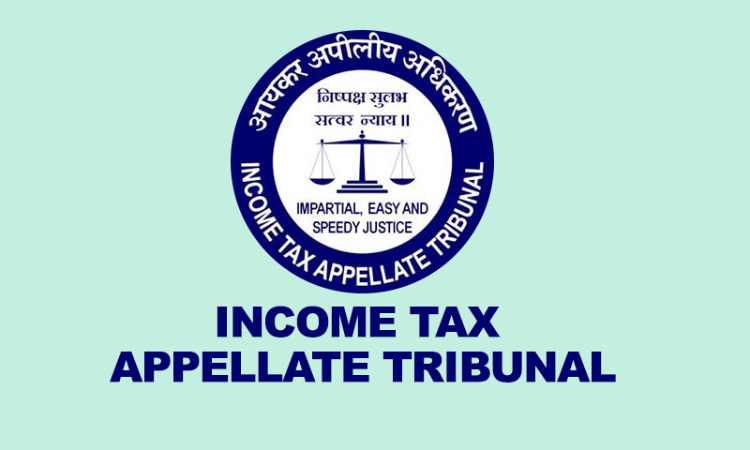- Home
- /
- News Updates
- /
- Unmarried Daughter’s Jewllery And...
Unmarried Daughter’s Jewllery And Mother’s Jewellery Can Be Kept In Family Home: ITAT Deletes Addition
Mariya Paliwala
9 Feb 2023 9:30 AM
The Allahabad Income Tax Appellate Tribunal (ITAT) has deleted the addition as the jewellery belonging to unmarried daughters will be kept along with the assessee’s jewellery in a family home where they are living together.The two-member bench of Vijay Pal Rao (Judicial Member) and Ramit Kochar (Accountant Member) has observed that the assessee has discharged her primary burden by...
The Allahabad Income Tax Appellate Tribunal (ITAT) has deleted the addition as the jewellery belonging to unmarried daughters will be kept along with the assessee’s jewellery in a family home where they are living together.
The two-member bench of Vijay Pal Rao (Judicial Member) and Ramit Kochar (Accountant Member) has observed that the assessee has discharged her primary burden by explaining the jewellery found during search and explaining in a statement that 504 grams belonged to her mother, which was later supported by the assessee by producing an affidavit executed by her mother. It is not uncommon in India that an old mother of 75 years keeps in safe custody her gold jewellery with her married daughter, as it is very much within the preponderance of human probability in Indian society. The onus was shifted to the department to conduct additional investigations to refute the assessee's claims before rejecting the assessee's contentions.
There were search and seizure operations conducted by Revenue in the group cases of Kesarwani, Zarda Bhandar, Sahson, and Allahabad and its partners. The assessee is a partner in two firms in the group. During the search, gold jewellery weighing 1,796 grams was found.
The statement of the assessee was recorded, and the assessee explained in her statement that 678 grams of jewellery belonged to her and her two daughters; 623 gold bars belonged to her husband; and 504 grams belonged to her mother. During assessment proceedings, the assessee explained that she got married in 1975. Her husband belonged to a respectable family in Allahabad. During their marriage, she received jewellery from both sides, and she received jewellery as a gift on several occasions.
The assessee explained that her husband deposited 623 grams of gold under the Tax-Free Gold Bond Scheme, which was received back later on December 29, 1998. The assessee explained that declared gold jewellery was found at the time of the search. The assessee explained that she declared gold weighing 796.150 grams under VDIS. The assessee produced relevant certificates before the AO.
The assessee requested that the gold jewellery discovered during the search be accepted as her "Stridhan" and disclosed. The assessee also called the AO's attention to CBDT Instruction Number 1916, dated May 11, 1994. The AO accepted 500 grams as the assessee's "stridhan," and the sources of jewellery were explained and accepted by the AO, keeping in mind the assessee's status and the family background of the assessee's husband.
The AO then treated 682 grams of gold jewellery as unexplained, and an addition to the income of the assessee was made by the AO to the tune of Rs. 9,49,003.
The assessee filed the first appeal before CIT (A). The CIT(A) accepted gold jewellery in the amount of 500 grams as the assessee's stride, which was also permitted by the AO.The Ld. CIT(A) also accepted gold jewellery weighing 796.150 g that the assessee declared under VDIS, 1997. The balance of gold jewellery to the tune of 499.85 grams was added to the assessee's income as unaccounted for by CIT(A).
The ITAT held that the department accepted 500 grams of gold jewellery as the assessee’s stridhan, keeping in view her status as well as the family background of her husband. As is evident from the record, the department never investigated the gold jewellery sought to be explained by the assessee as belonging to her unmarried daughters. Once the unmarried daughters are living with their parents, it is not uncommon in India that jewellery belonging to unmarried daughters will be kept along with the assessee’s jewellery in a family home where they are living together. The department, before rejecting the contentions of the assessee, ought to have conducted a proper inquiry or investigation.
Case Title: Shakun Devi Versus Joint Commissioner of Income Tax
Citation: ITA No.573/Alld/2014
Date: 05.01.2023
Counsel For Appellant: C.A. Praveen Godbole
Counsel For Respondent: Sr. DR A.K. Singh

